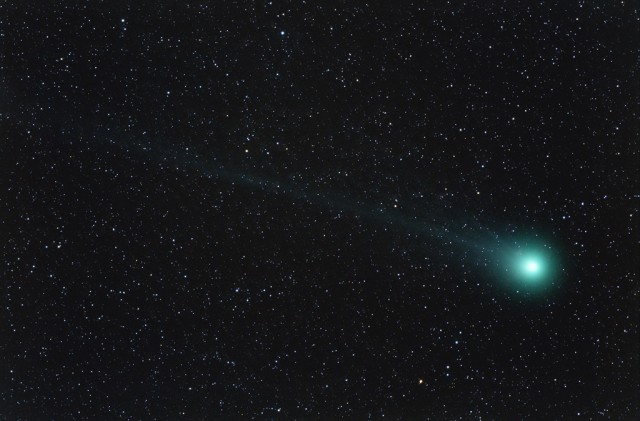
Here’s another comet image. Not as bright as it was, but still putting on a good show.
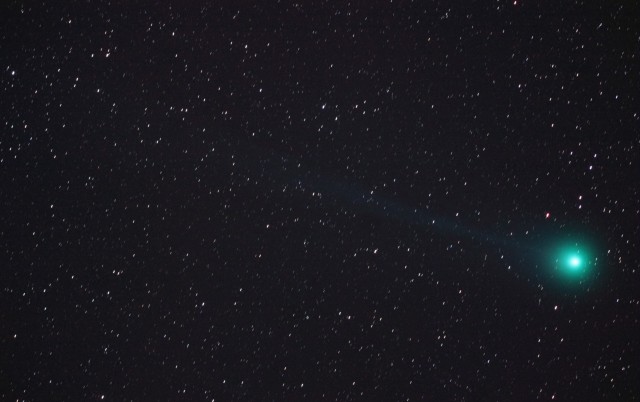
I’ve been wanting to shoot some sub-images of Comet Lovejoy at relatively low ISO’s and for at least 15 minutes. Here’s one that was shot at ISO 200 and boosted up a bit with some curves manipulation in PS. So, this is a representation of old-school, one-shot imaging like I used to do back in the day with film. You don’t have much in the way of post processing since the image looks fairly nice without that sort of thing.
Update:
Here’s the preliminary image from the data captured in the same session as the above:
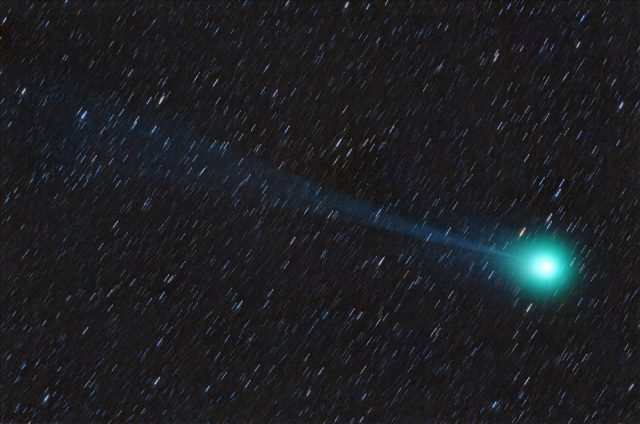
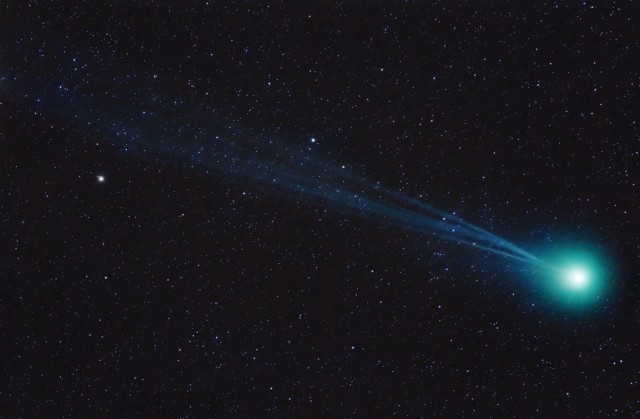
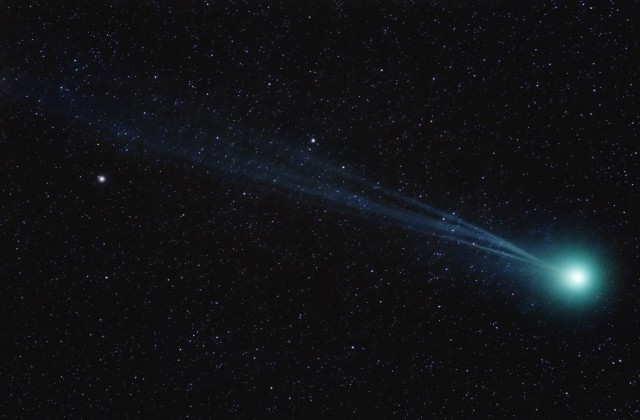
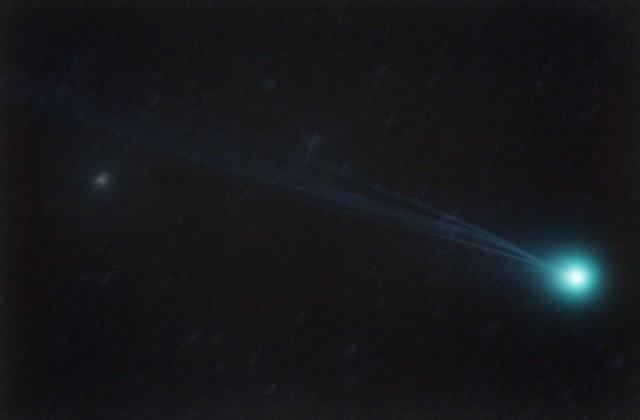
Ok, I got some decent data on this imaging session, even though there were some high altitude clouds that came and went a few times. Then, the moon rose and I stopped imaging at that point. Lovejoy is presenting its thin, edge-on tail mode to us on this night. It makes the tail brighter, that’s for sure.
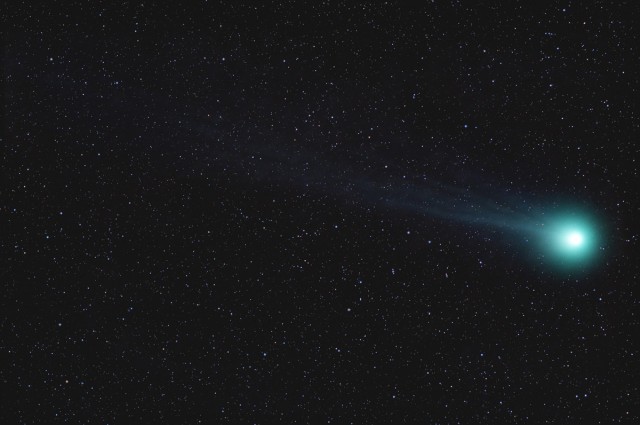
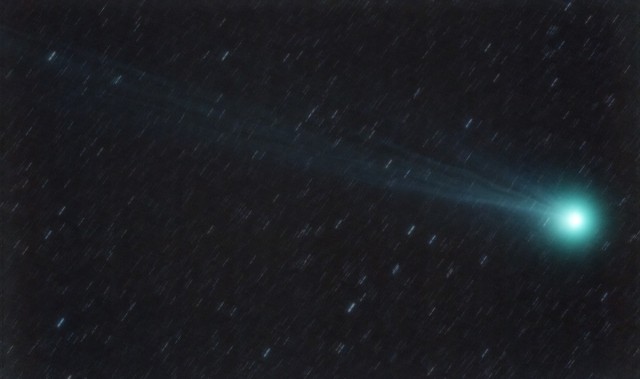
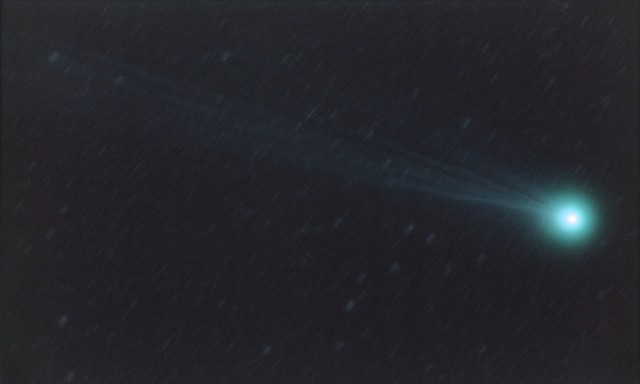
The nearly full moon rose about an hour after twilight ended, so that gave me enough time to get 30 subs of Comet Lovejoy Q2 before it came up and started washing out the comet. Lovejoy looks like it is not as bright as it once was, but it still has a long tail.
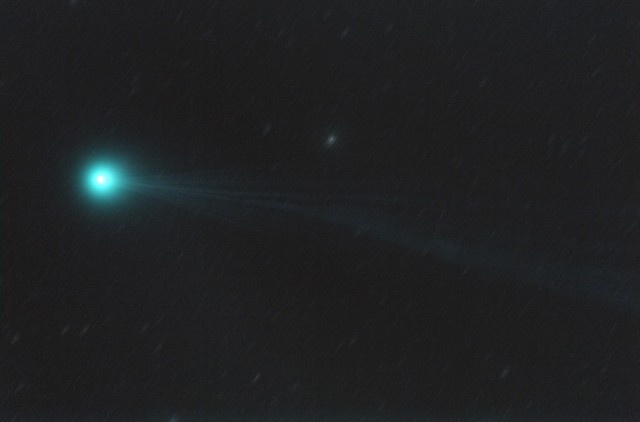
Click here to see an extra-large version of the above.
Here’s the StarStreaks version:
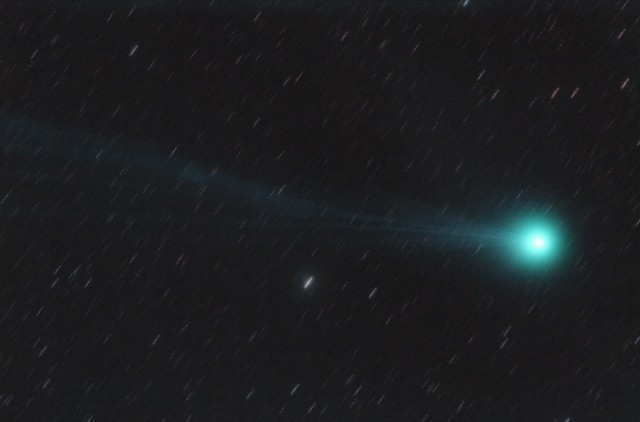
Finally, here’s the StarFreeze version:
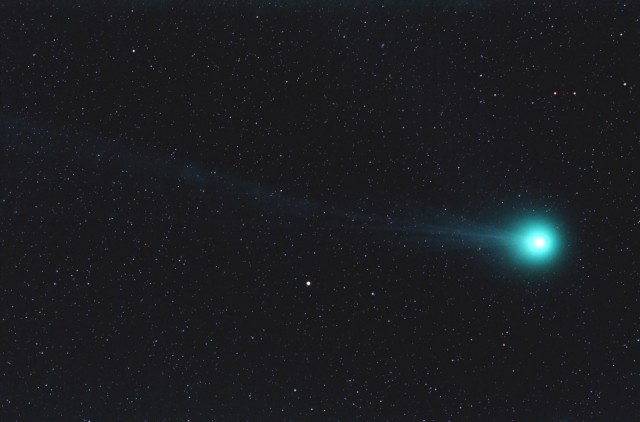
I don’t shoot very many deep sky images with a moon past first quarter, but with comets I can make an exception. Lovejoy is a really photogenic comet and it even looks good in poor conditions. Clouds came in and I had to stop imaging after shooting less than 20 sub-images. But, with this comet, 51 minutes of integration was enough to show it without blurring due to the tail rotation that is evident in my previous animated GIF images.
Speaking of animated GIF’s, I created one with the last 3 days of images. On the second day, I put two images in – one from the beginning of the imaging session and one at the end of the session. It doesn’t show much except the tail flapping around. Part of that might be due to a difference in camera orientation. Anyway, I include it below as another part of the documentation of Comet Lovejoy Q2’s activity:
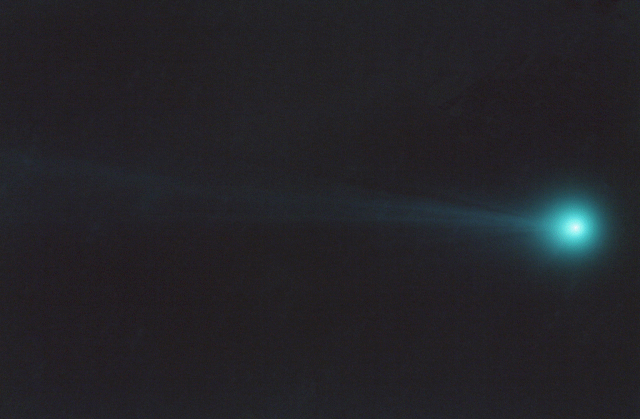
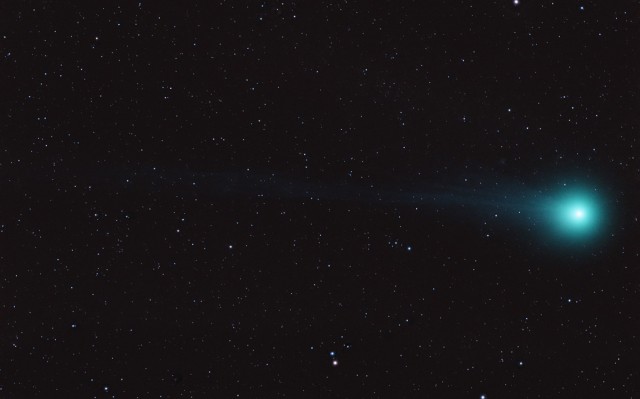
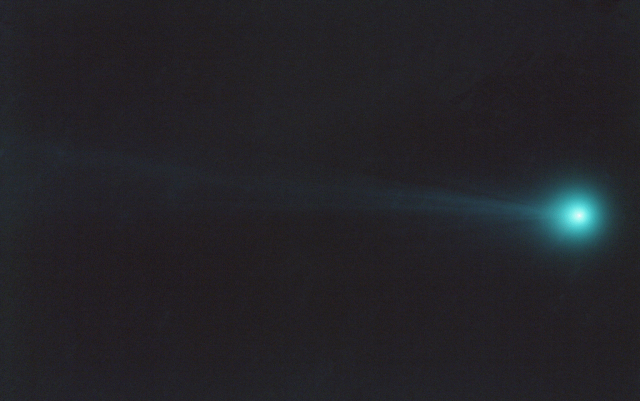
My prediction that the tail of Comet Lovejoy would display a structure seen 9 days before the date of this image has failed. There is no resemblance to the appearance of the comet from 9 days before and the comet actually exhibits features I have not seen before.
Very strong moonlight hindered getting good images. The moon was just past first quarter and was right below the comet. I guess I’m lucky to get what I got. I’m still investigating the rotation aspect of the tail structures and why it appears to take 9 days to complete one revolution.
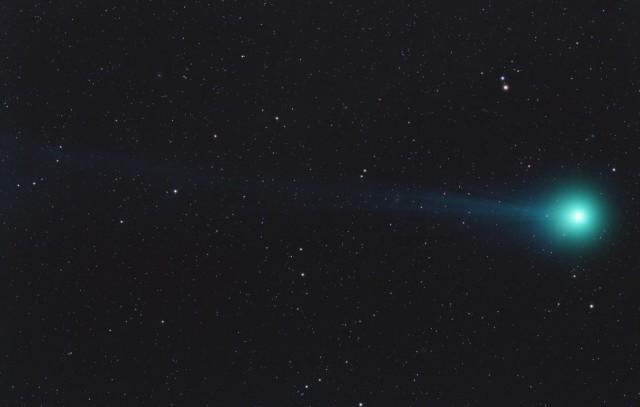
With the moon only a few degrees away in the sky and just past 1st quarter, imaging Comet Lovejoy Q2 was iffy at best. Well, I did it anyway and here are the results. Since the comet is relatively bright, it can be imaged with the right filters and exposure.

More evidence that the comet is rotating or spinning around an axis. This is just over 3 hrs of time and the angle of rotation in that time looks to be about 5 degrees. So, if we take 360 degrees and divide by 5 degrees we get 72, which is how many 3 hr periods to total one rotation. 72 times 3 hrs = 216 hours total time for 1 rotation. 216 divided by 24 hrs = 9 days. Bingo!
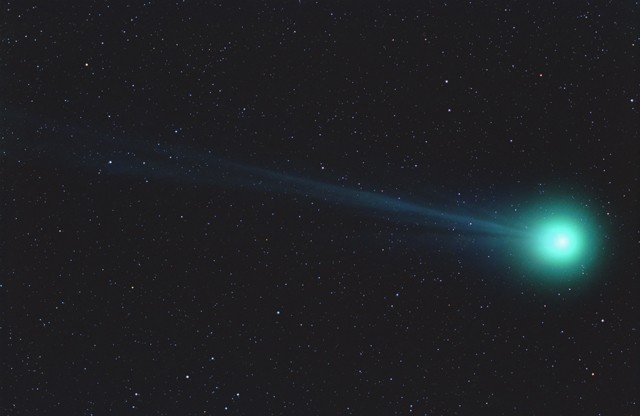
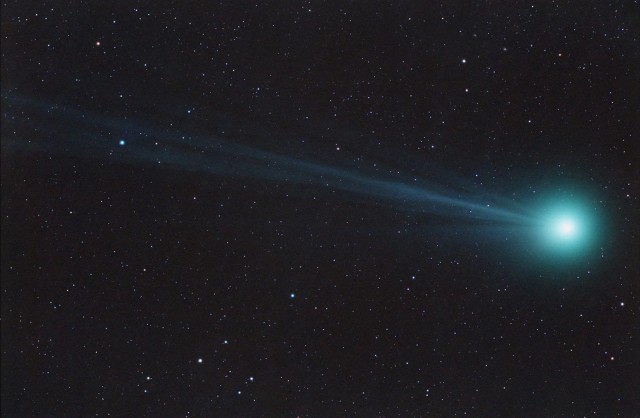
This image should correspond to my image from Jan 16th, 2015 (UT.) The resemblance is striking, especially the head area. However, it does look like this one has just a little less width and therefore is turned at slightly more of an angle than the one from Jan 16th.